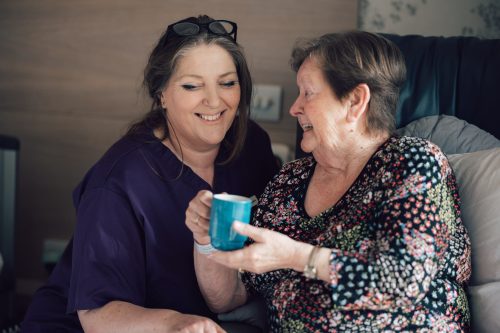Hospice unveils plans to double reach in five years

St Peter’s Hospice in Bristol has launched a strategy which aims to double the number of people it supports within the next five years.
Driven by research and stakeholder feedback, the strategy aims to address some of the key challenges and barriers faced by the hospice.
It says that currently it is only reaching one in three people in the region who need end of life care and with an ageing population, the demand for support is only set to grow.
On average, people are referred to the charity just 44 days before death, but research shows earlier support improves outcomes for patients, carers, and loved ones.
Research carried out by St Peter’s showed that one in three people don’t know what the charity does, and 50% thought hospice care needed to be paid for.
Research shows that some groups – such as people with non-cancer conditions and those from marginalised backgrounds, including individuals who are homeless – are less likely to receive hospice care.
The move is part of a renewed vision for St Peter’s, to ensure more individuals receive the end of life care they deserve. The new five-year strategy is also supported by a brand refresh, its first in over a decade.
As well as doubling their reach, St Peter’s is also aiming to extend the length of time it cares for patients, from the last weeks of life, to the last 12 months. It will also focus on delivering more of its services in the community, with input from those communities, and health and social care professionals, about what they want and need.
“Our vision is to transform the experience of death by bringing understanding, compassion, and care to those navigating this difficult journey,” said St Peter’s CEO Susan Hamilton.
“The UK is at a critical juncture, with a significant rise in the demand for end of life care expected in the years ahead.
“As the number of people needing end of life care grows, we are committed to providing them and their families with the compassionate care they need.
“While recent years have been challenging, we’re now focused on an ambitious plan to expand our reach and support people earlier in their journey.”
St Peter’s provides free end of life care to adults in the Bristol, South Gloucestershire and North Somerset areas. Over 90% of care is delivered in the comfort of people’s own homes, the rest is delivered at the hospice in Brentry.
The new strategy and look were developed in collaboration with employees, volunteers, supporters and the public, and aims to broaden the reach of the charity, which was founded in 1978, to address inequalities in end of life care.
The research which informed the new strategy highlighted the importance of earlier conversations about death and dying, and timely support to improve the experience of patients and their loved ones.
“Our priorities will include taking a leading role in conversations on death and dying, working in partnership with workplaces, schools, the NHS and the voluntary sector. We want to challenge myths about hospice care so everyone knows they can turn to us, and empower people to feel more able to talk about death and dying,” says Hamilton.
“We will also collaborate with other health and social care providers to identify and support patients earlier, and we’ll embrace new technologies and continue to focus on innovation, because we know people are increasingly looking for information and support on digital platforms.”
The new strategy has also led to a rebrand, which Hamilton says is a way to break down some of the barriers to people accessing the charity’s support or making donations.
“Our research showed that one in three people didn’t understand our work, many thought they had to pay for our services and nearly half didn’t realise we cared for people in their own homes, when in fact, that’s where 90% of our care is provided. Our brand was described as dated and not reflective of our range of services. By modernising how we look and sound, we can break down some of the misconceptions to increase our reach and income.
“We have always received fantastic support from the local community, and this is going to be more important than ever in making our ambitious plans a reality. We can’t stop death. But together, we can make sure people get care that’s right for them, when they need it.”
It costs £30,000 a day to run St Peter’s. Less than 20% of funding comes from the NHS, and the remainder is funded through community support – gifts in wills, donations, fundraising and money raised through its retail shops.





